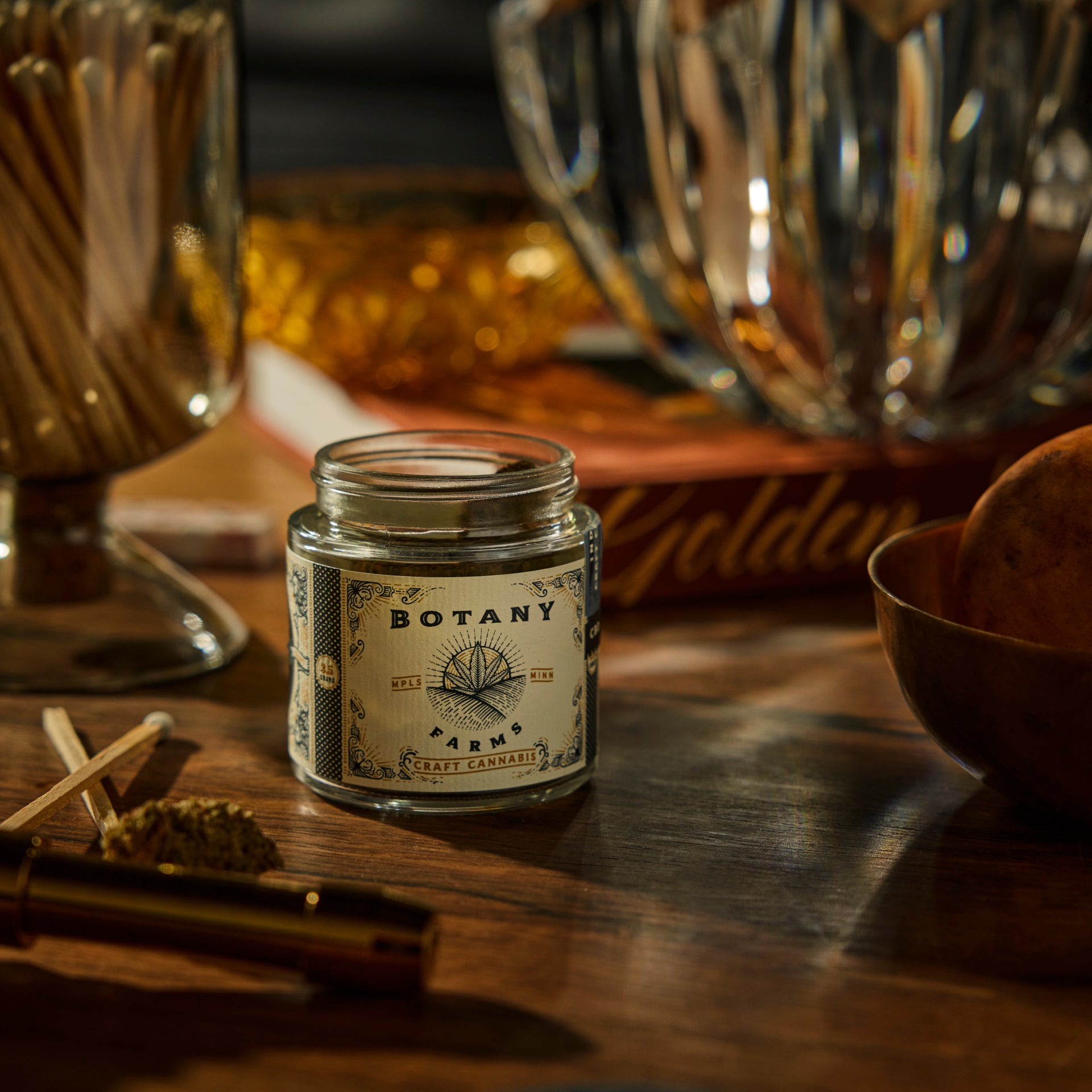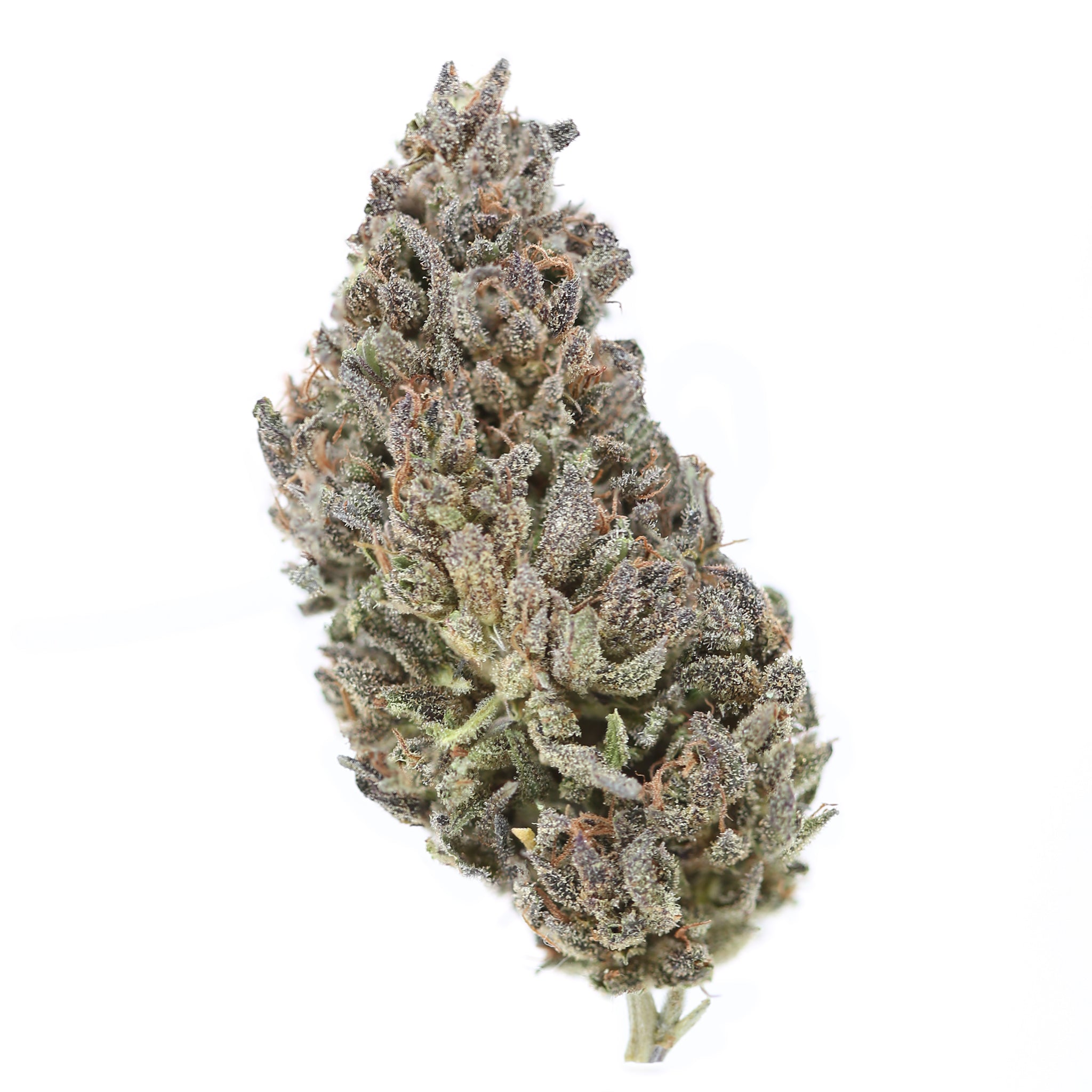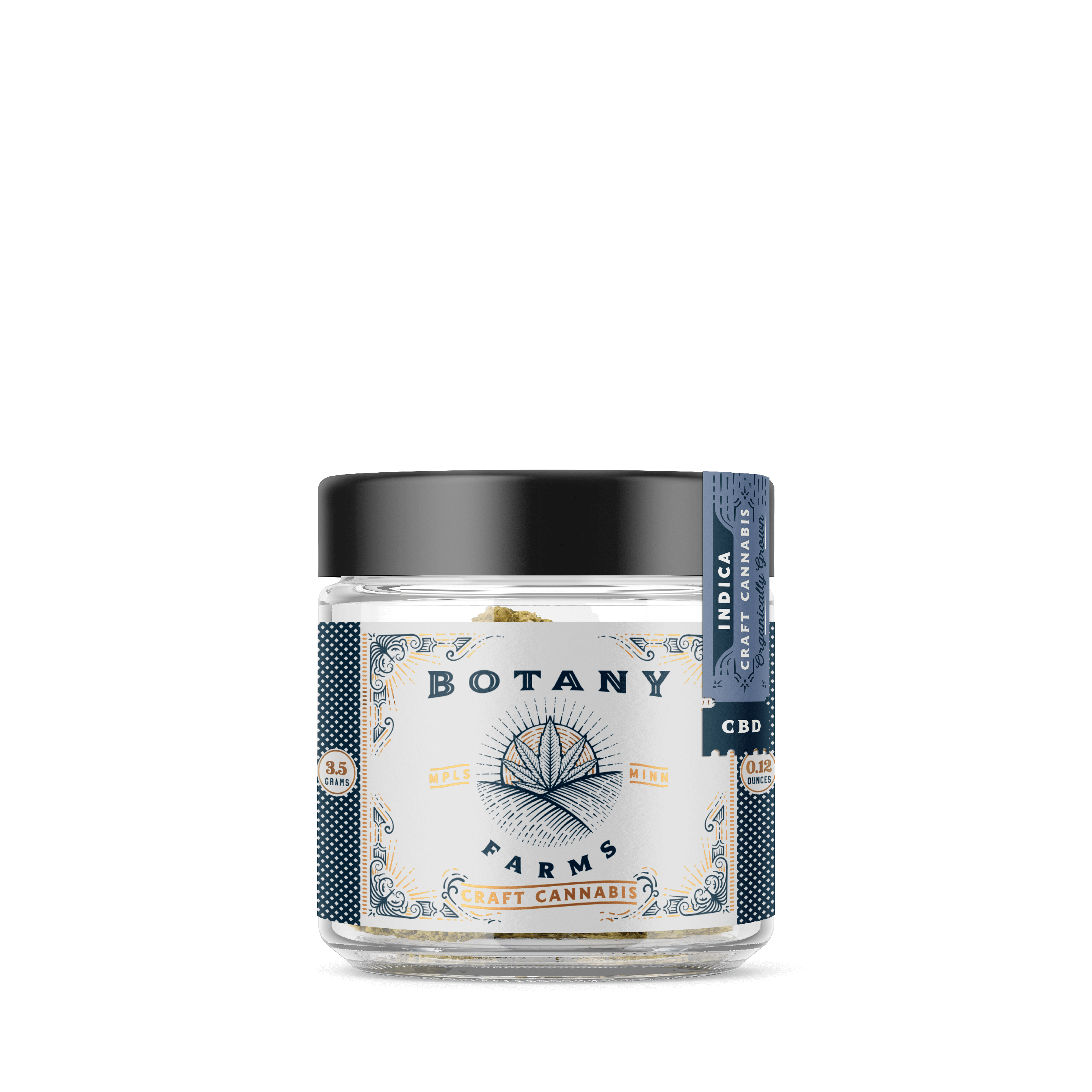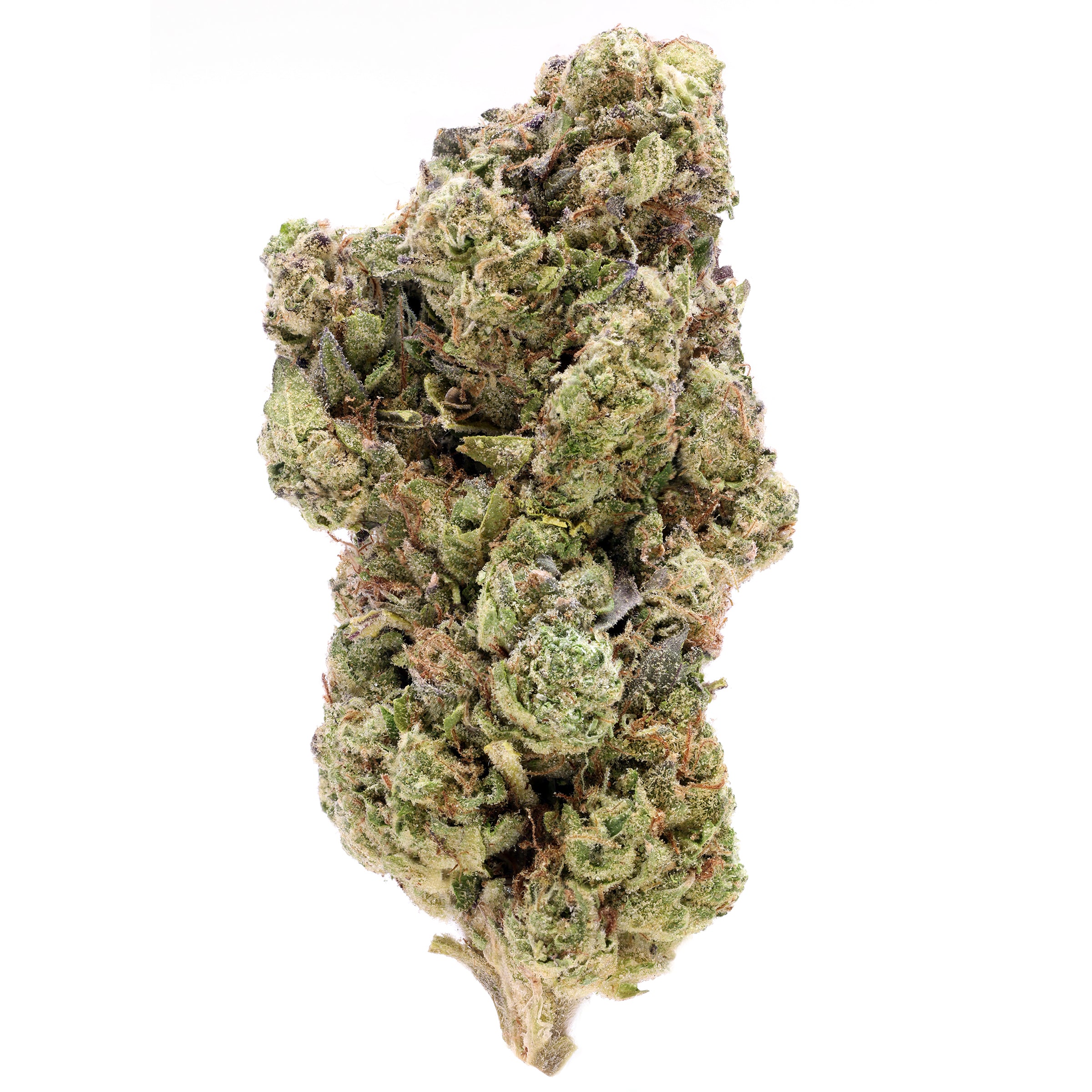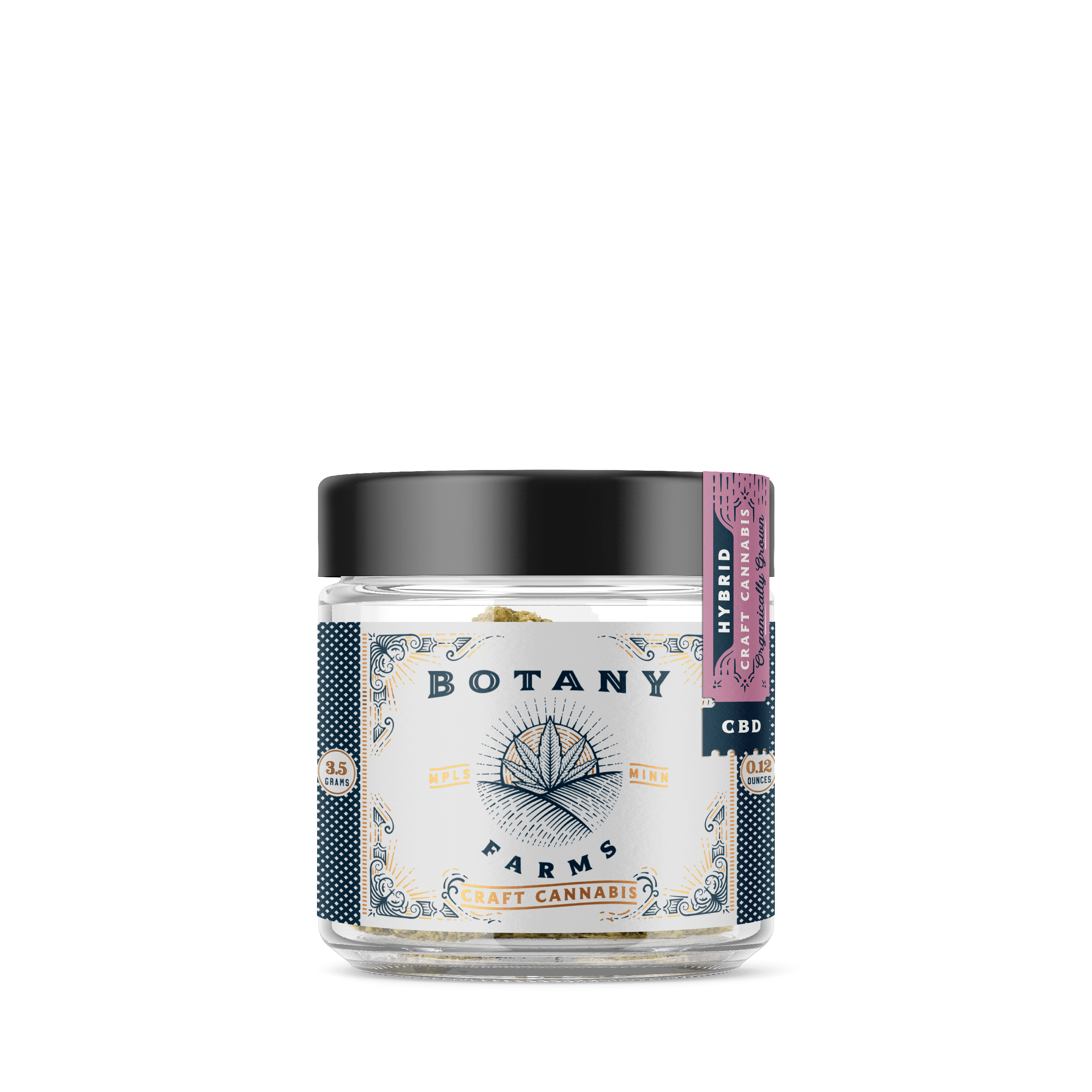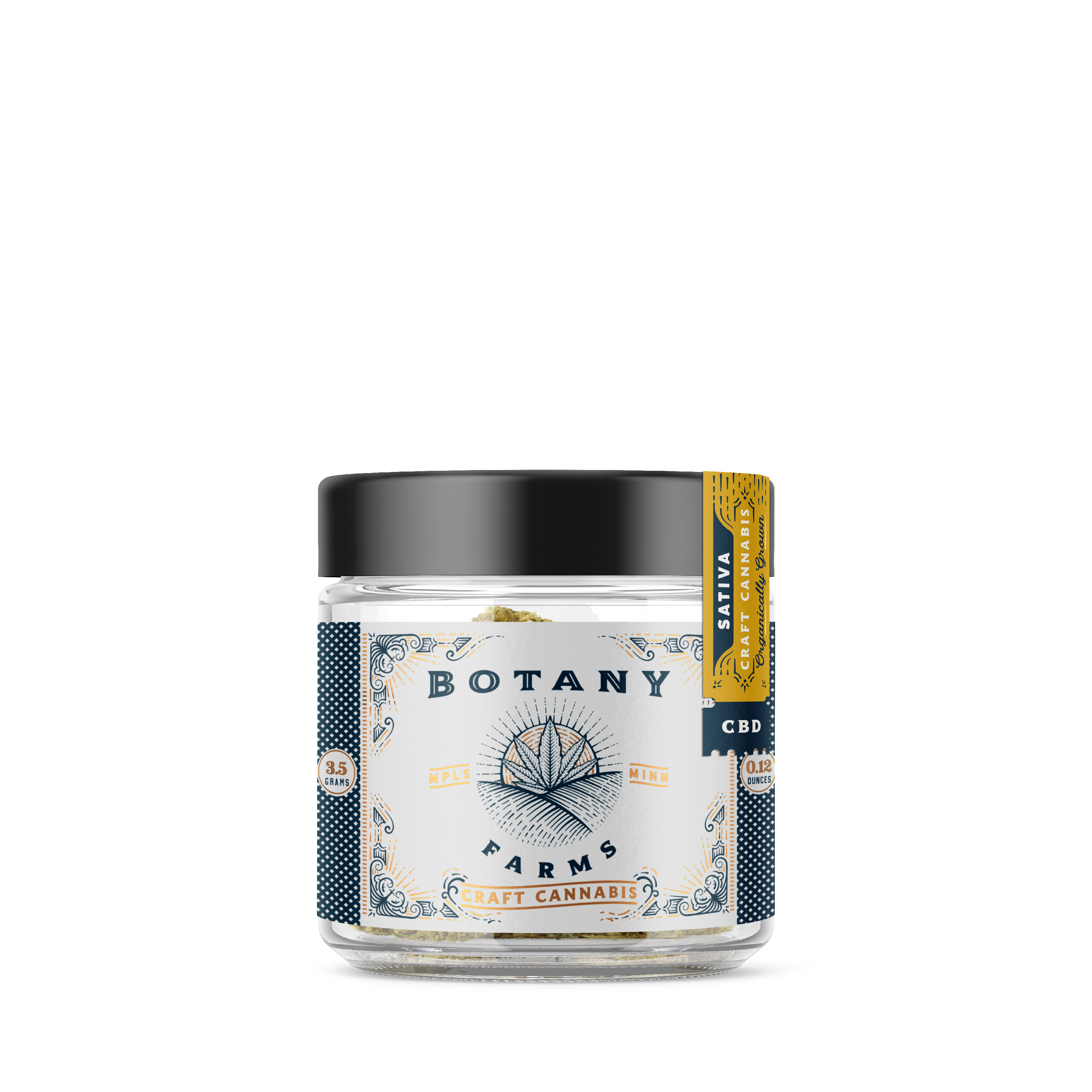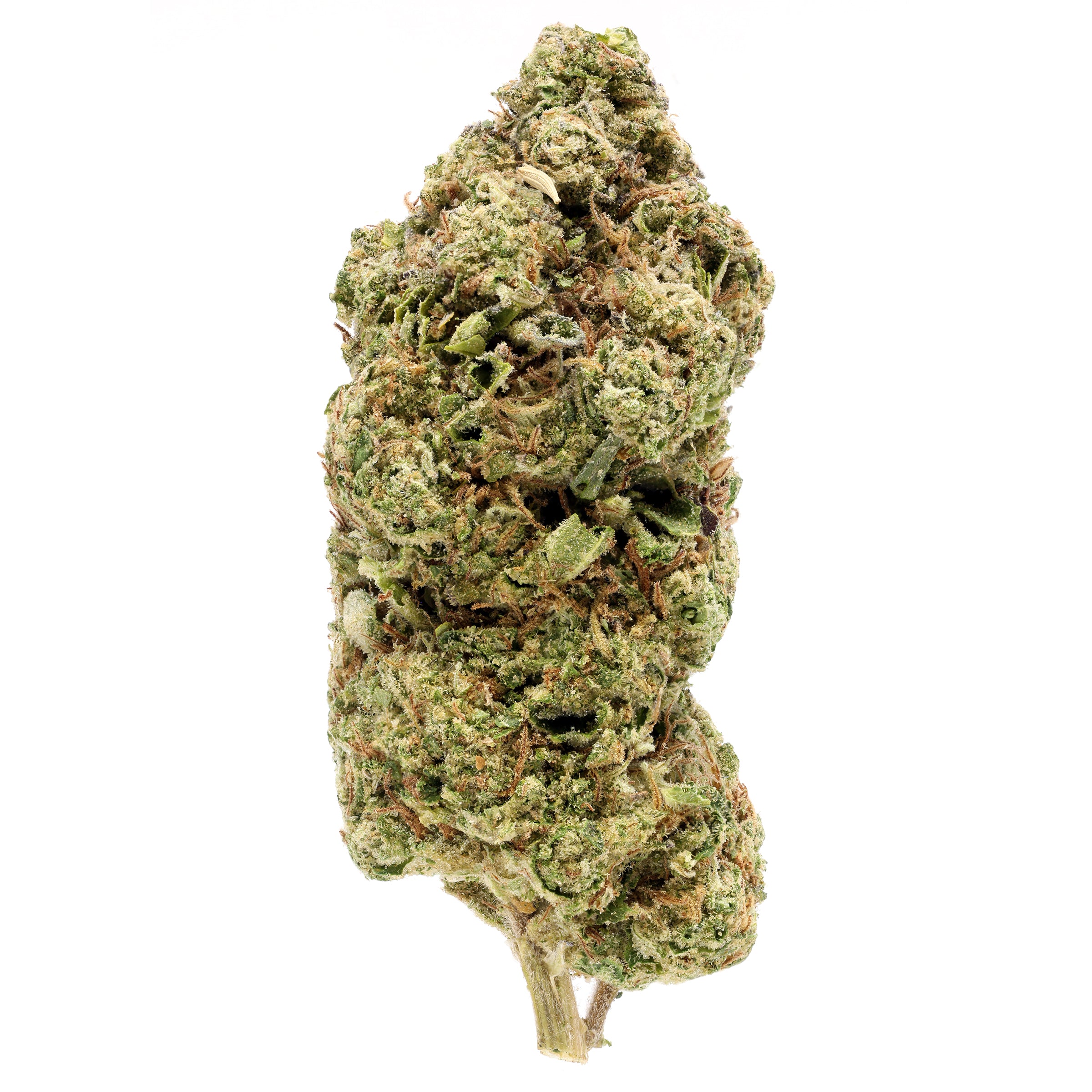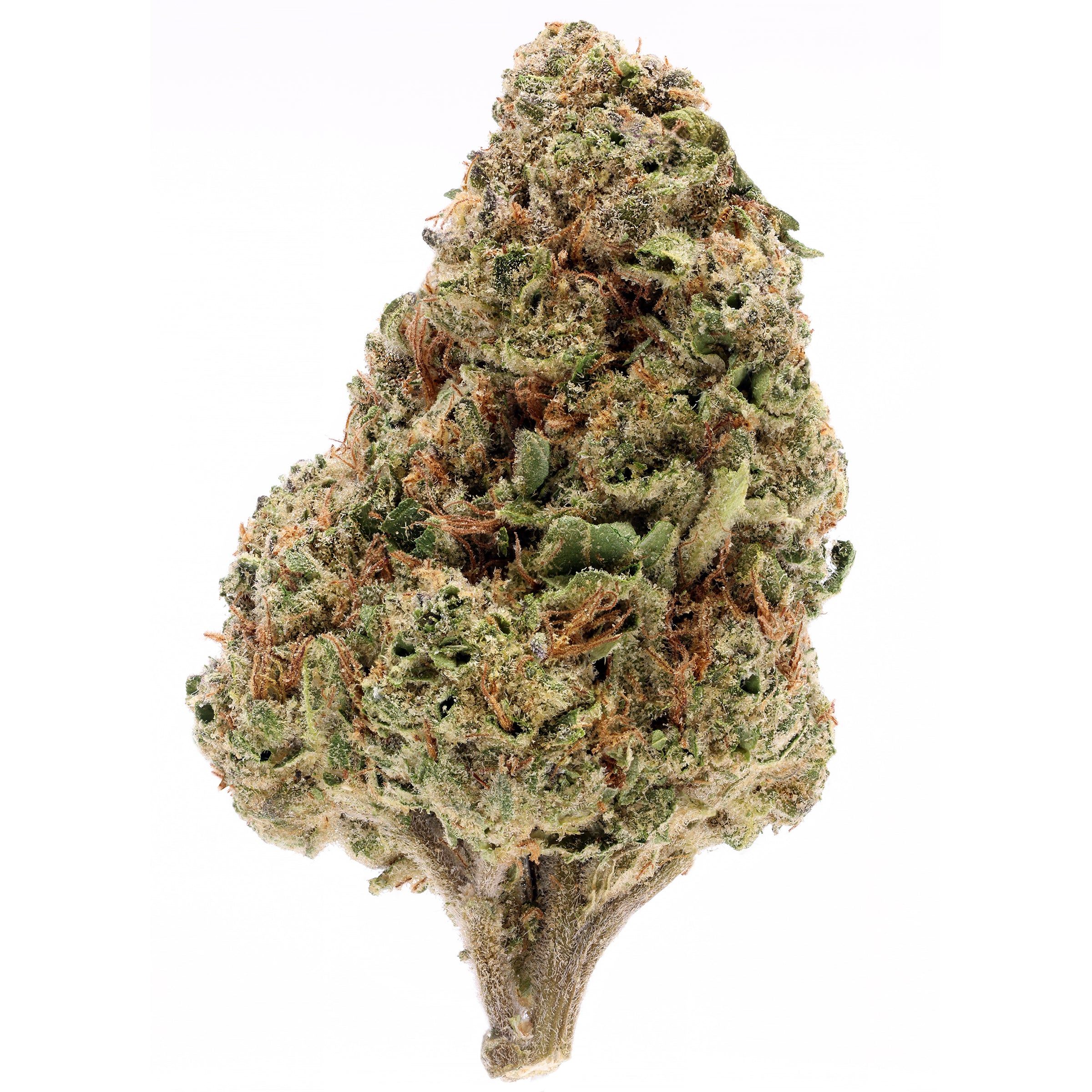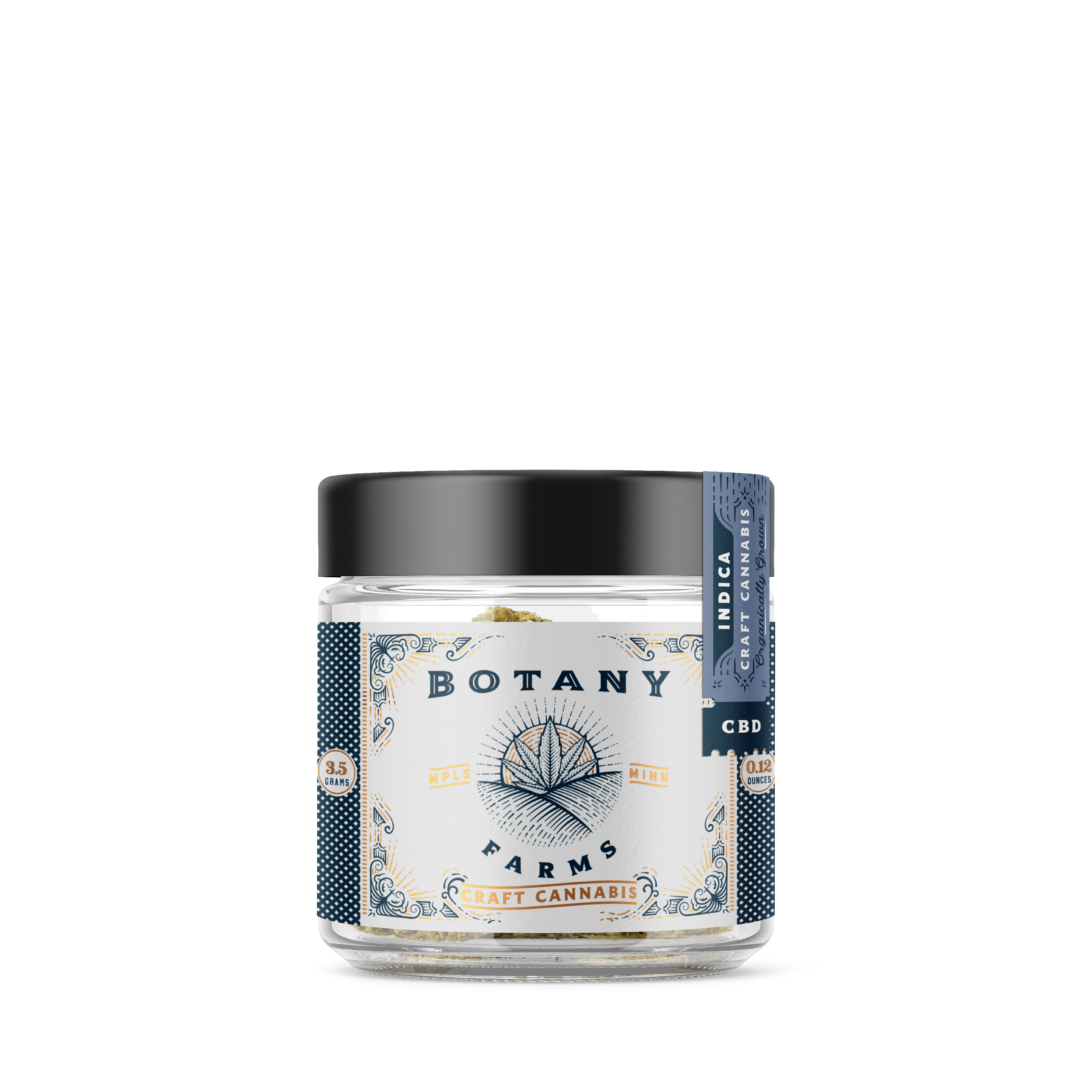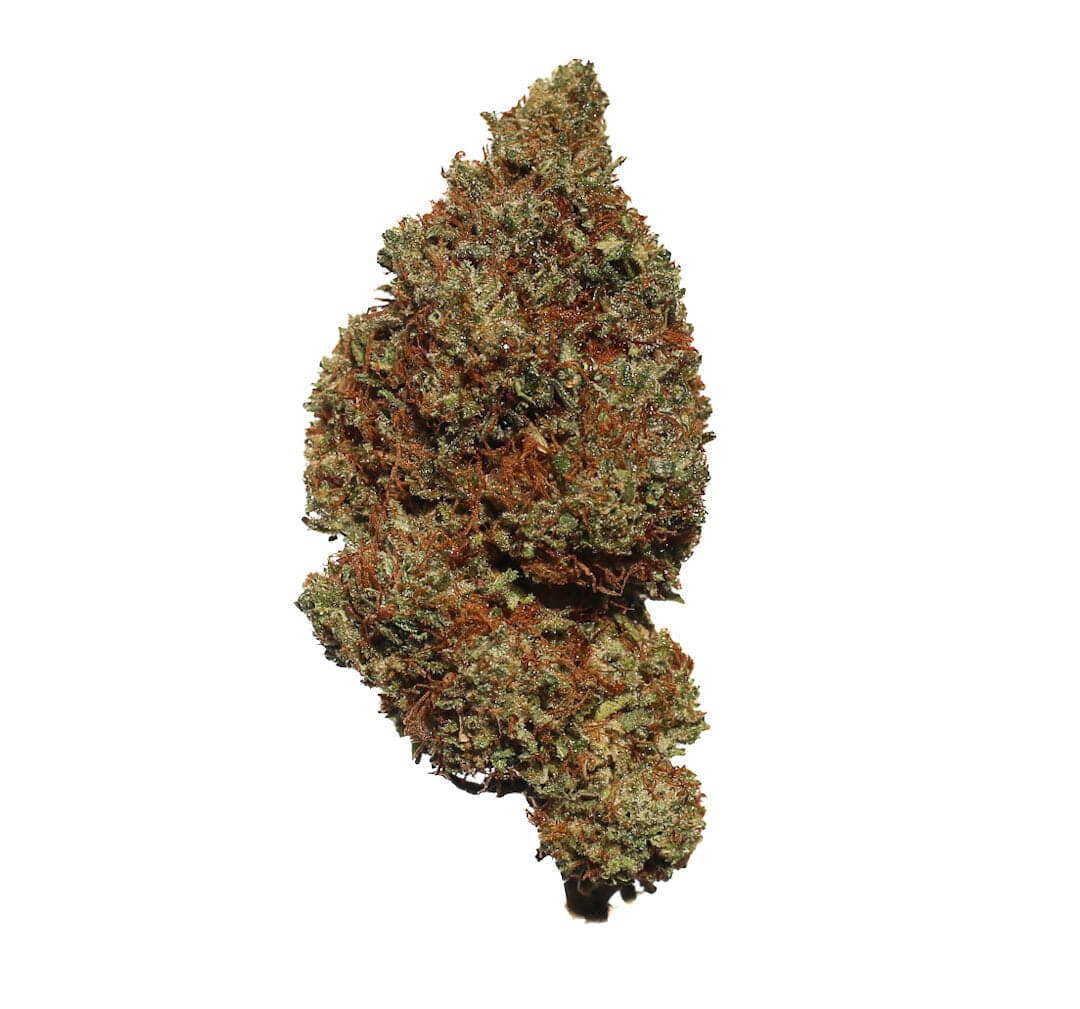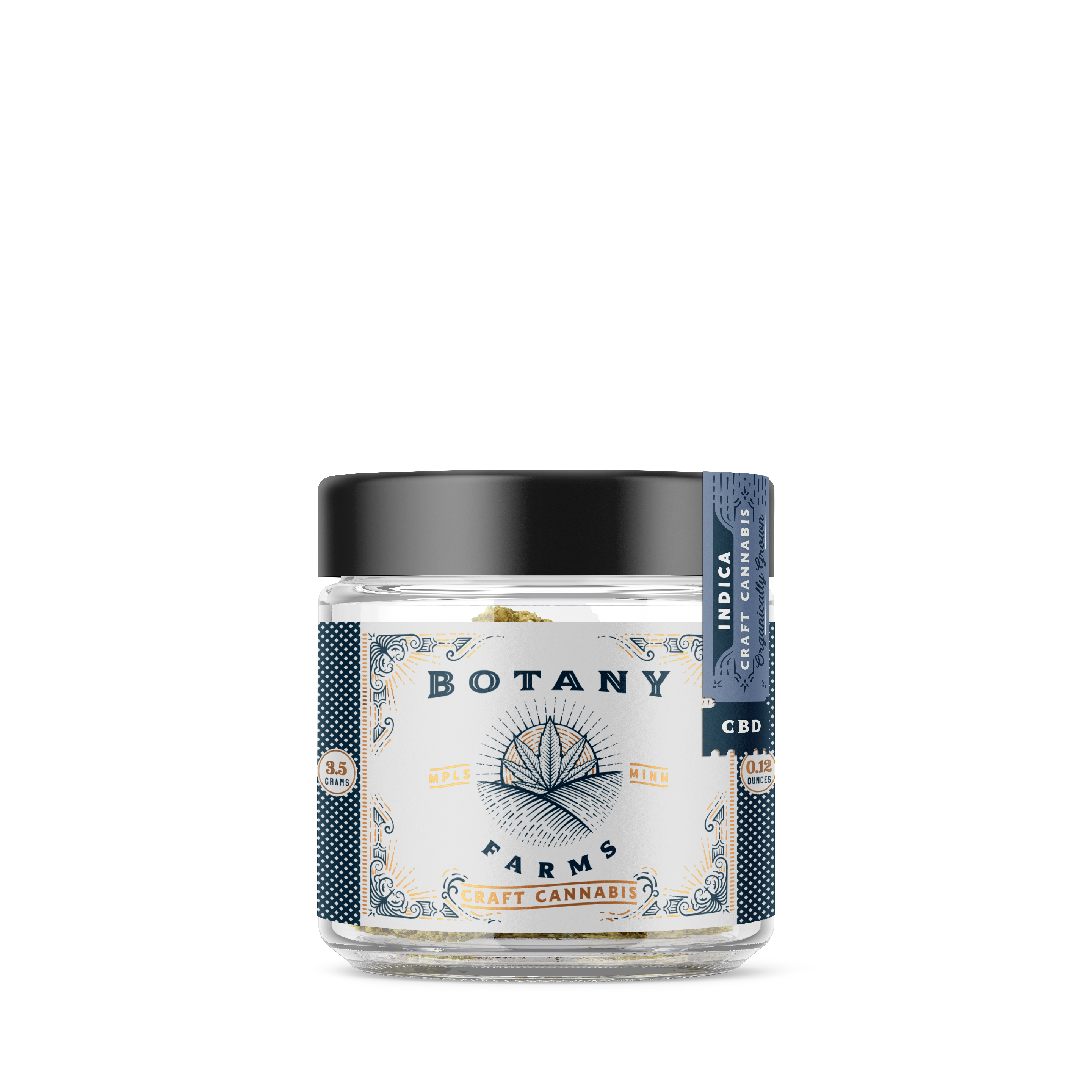The world of cannabinoids is quickly evolving into a wide and expanding universe as studies regarding cannabis and all its natural compounds progress. Science has so far detected at least 400 chemical entities in the cannabis plant, of which 113 are different cannabinoids. Of all these cannabinoids, the most popular are definitely THC and CBD, primarily due to a large number of studies and investigations that show evidence about the therapeutic properties that these cannabinoids could generate on the human body. Although these cannabinoids are the most popular among medical cannabis users, other less popular cannabinoids could directly benefit people's general health, including Cannabichromene or Cannabichromene.
Despite its low popularity and strange name, Cannabichromene could be one of the most revolutionary therapeutic cannabinoids. If you are looking to understand what Cannabichromene is and what its effects are, you’ve come to the right place.
What Is Cannabichromene?
Cannabichromene, also known as cannabichromene, is a non-intoxicating phytocannabinoid that occurs naturally in cannabis plants and is much more common than many people would initially believe. Although the acronym Cannabichromene or the name “cannabichromene” may sound like something new or strange to some people, the scientific community has been aware of the existence of this cannabinoid for more than half a century since 1966, when Doctor Raphael Mechoulam Y. Gaoni discovered it.
Like many cannabinoids, cannabichromene occurs naturally in cannabis from CBGA or cannabigerolic acid, which is the parent compound from which all cannabinoids start. Cannabichromene can also be the main ingredient for making hemp-based tinctures, oils, cartridges, and other concentrates. This phytocannabinoid could have potentially effective effects as an analgesic, neuroprotective, and mood enhancer. Nevertheless, we still need more specific research on the impacts and benefits that Cannabichromene could bring to people's general health.
What Are the Benefits of Cannabichromene Cannabinoid?
Like virtually all cannabinoids, the effects of Cannabichromene could also represent potential health benefits for some people. This is why cannabichromene has been drawing the attention of the scientific community lately as a non-psychoactive cannabinoid with possible therapeutic uses. The properties of Cannabichromene make it a perfect potential candidate for medicinal use or to assist in treating some conditions. The Cannabichromene is still under study to corroborate the possible uses and medical benefits that it could have. Nevertheless, there is evidence suggesting Cannabichromene could provide the following benefits:
Pain and Inflammation
The Cannabichromene has a peculiar way of working; it does not directly interact with the CB1 and CB2 receptors but instead interacts with the TRPV1 receptor sites that are closely related to sensitivity to pain and inflammation. These types of receptors are present on many cells, including taste buds and nerve cells, and they are sensitive to stimuli such as acidity, pressure, heat, and other irritants.
In both in vivo and in vitro studies, an equal dose of Cannabichromene may be as effective as one of PBZ or phenylbutazone, an anti-inflammatory drug. The big difference is that Cannabichromene, being less toxic than PBZ, can be administered in larger doses without harming the rest of the body. The Cannabichromene also promotes the production of endocannabinoids and reduces the production of inflammatory substances. Therefore, in some patients, it could significantly moderate the experience of inflammation and pain.
When it comes to inflammation, Cannabichromene oil appears to be especially effective. This is because inflammatory flare-ups seem to respond better to quick-relief treatments. Cannabichromene tinctures also appear to be a viable option due to their convenient use and quick onset effects.
Cancer
Both CBD and Cannabichromene, as neutral cannabinoids and in their active form, seem to have TPSA value qualities which allow the cannabinoid molecule to penetrate the cancerous cell membrane. On the other hand, their acidic or inactive form, CannabichromeneA, and CBGA, do not have the same effect. This characteristic closely relates to the different radios of antitumor activity these cannabinoids present.
Inhibitor of acne
Due to the powerful anti-inflammatory properties of Cannabichromene, and like CBD, Cannabichromene could inhibit the excessive production of lipids in the sebaceous glands, which are responsible for producing the skin's natural oil. Clogged sebaceous glands are directly related to acne. Cannabichromene could prevent acne breakouts by suppressing lipid material overproduction.
Depression
There is evidence to suggest that, of all the non-intoxicating cannabinoids, Cannabichromene could be the most anti-depressant of all, being up to ten times more effective in treating depression and anxiety than CBD or THC itself. THC also shows similar antidepressant properties, but the big difference is that Cannabichromene does not produce the euphoria and high that come with THC consumption, which can also have the opposite effect and induce states of paranoia and episodes of anxiety when you consume it in large quantities. Cannabichromene eliminates this possibility while presenting a potentially more effective solution to combat depression. It is difficult to fully state if Cannabichromene is a more effective antidepressant than CBD or THC. The truth is that these cannabinoids can have a more powerful effect when they work together and generate a synergistic effect in which they complement each other.
Brain Cells
Apparently, Cannabichromene, like other cannabinoids, could generate some effects that may be beneficial for brain cells. Starting with its potent anti-inflammatory and antitumor properties. The Cannabichromene could present a viable option to reinforce the care of the brain since it also seems to offer beneficial qualities for brain health as such.
Neural stem progenitor cells
A
study conducted in animal models studied the effects of some non-psychoactive cannabinoids seeking to elucidate their effects on the fate of adult neural progenitor cells or NSPC, an essential component in good brain function both in healthy brains and in brains with some pathology. The results of this study show that Cannabichromene could increase the viability of NSPCs while inhibiting their differentiation into astroglia.
Neuroprotection
There is some preclinical evidence suggesting that Cannabichromene and other phytocannabinoids might have neuroprotective activity, especially concerning some brain conditions and pathologies. In
a study published in 2020, Cannabichromene or Cannabichromene showed promising results regarding models of hypomobility and seizures, Parkinson's disease, and Huntington's disease. Although these results are good, we still need more research to fully validate these findings and see the range of action of the different combinations of phytocannabinoids concerning a series of neurodegenerative disorders.
Neuroregeneration
A
study published in 2013 found evidence that Cannabichromene may promote neurogenesis by increasing the viability of brain cells as they develop. This could be of great use for some brain conditions and could even guide us towards new treatments for neurodegenerative diseases and brain injuries.
Analgesic
Chronic pain is the most cited reason for using cannabis medicinally. Historically, THC and CBD are the cannabinoids most often attributed to analgesic properties. Nevertheless, evidence suggests that products containing Cannabichromene and products of other lesser know cannabinoids such as CBG isolate or
CBN oil could present a new viable and tremendously effective alternative to treat pain. The Cannabichromene's action method is slightly different because it does not show a high affinity for binding to the CB1 and CB2 receptors. Instead, it uses other modes of action to mitigate or modify the overall pain sensation in the body. More specific research is still needed on all of these potential health effects cannabinoid in pain treatment, but the results obtained seem pretty promising.
Cannabichromene Possible Health Benefits
In addition to the general effects that Cannabichromene presents both in preliminary studies and in animal models, in vivo and in vitro studies, this phytocannabinoid could directly help treat certain specific medical conditions. There is still some way to go to confirm that Cannabichromene could serve as a treatment for these conditions, much less that it could replace other traditional therapies. Still, the findings in preclinical tests on the effects of Cannabichromene concerning some medical conditions indicate that Cannabichromene presents possible support to treat some diseases. Some of the conditions on which the Cannabichromene has shown to have some kind of effectiveness are:
Irritable bowel syndrome
Cannabichromene appears to have potent anti-inflammatory qualities that could be very useful in treating IBS or Irritable Bowel Syndrome. Cannabichromene fights inflammation by activating the CB2 receptors of the endocannabinoid system. Nonetheless, Cannabichromene does not activate CB1 receptors; therefore, the anti-inflammatory potential of Cannabichromene could be significantly increased when it works in conjunction with other cannabinoids that trigger them, such as THC.
Crohn’s disease
Cannabichromene could present a natural alternative to treat Crohn's disease due to the anti-inflammatory load that Cannabichromene carries. Although it doesn't cure Crohn's disease, Cannabichromene's anti-inflammatory properties can significantly help alleviate symptoms, especially when working with other cannabinoids such as CBG and CBD. The Cannabichromene is in fact ideal to better deal with all types of pain, especially all pain related to inflammation. In addition, it also seems effective in treating some bacterial infections as it supports the immune system without producing any kind of high or side effects.
Neuropathy
The Cannabichromene could present additional help for some patients who suffer from chronic pain due to neuropathies. Like CBD, Cannabichromene is a non-psychotropic cannabinoid that does not cause any kind of high and has inflammation-reducing qualities that may help treat some pain. Although Cannabichromene by itself can help reduce pain and provide additional support to the immune system, there is evidence to suggest that its range of action could be amplified by acting synergistically with other cannabinoids such as THC or CBD, activating both endocannabinoid receptors and changing the way we perceive pain.
Chronic post-operative pain
Post-operative pain is generally closely related to the inflammation of the wounds resulting from the operation itself. The potent anti-inflammatory qualities of Cannabichromene could significantly help reduce post-operative pain by lowering inflammation in the injury and the surrounding areas. When Cannabichromene works synergistically with other cannabinoids like CBD or CBG, it can dramatically amplify their effectiveness. In addition, the ability of CBD to modify the experience of pain in some patients may significantly impact reducing pain intensity.
As always, much more research needs to be conducted before anything definitive can be said about the health effects of this cannabinoid.
How Cannabichromene Works?
Cannabichromene could be as powerful and effective an antidepressant and anti-inflammatory as CBD. Because Cannabichromene is a non-psychoactive cannabinoid, same as CBD, CBG, and
CBT, it does not produce any intoxicating effects or feelings of euphoria, unlike THC.
Nonetheless, like other cannabinoids, Cannabichromene works by binding to some endocannabinoid receptors in the body, including receptors associated with the perception and experience of pain. Because of this, the Cannabichromene could present a viable alternative to deal with certain types of inflammation or chronic pain.
Additionally, Cannabichromene could be up to ten times more effective than CBD as a treatment for dealing with anxiety and stress. In addition to its potent anti-inflammatory and analgesic qualities, Cannabichromene also possesses antitumor and antiviral qualities and bone growth-stimulating properties.
Is Cannabichromene Legal?
A short answer to this question would be yes. Cannabichromene as such is legal because although it is a natural compound from the cannabis plant, it is a non-psychoactive cannabinoid and, like CBD, does not produce intoxicating effects. The thing is that Cannabichromene is still in a legal gray area since it occurs naturally, both in cannabis THC-rich and in hemp. So cannabis products containing Cannabichromene but with a THC level higher than the legal rate generally require a medical cannabis card to obtain them. Nevertheless, you can get different brands selling Cannabichromene isolate easily online due to the popularization of the therapeutic properties of this novel cannabinoid.
Strains of Cannabis High in Cannabichromene
Cannabichromene occurs naturally in both marijuana and hemp. In fact, along with CBD and THC, it is one of this plant's major phytocannabinoids and carries excellent medicinal power. As we already mentioned, nowadays, you can get different Cannabichromene products available in the market; both oils and Cannabichromene isolates are the order of the day. But in addition, you can also get different cannabis strains that naturally produce high levels of Cannabichromene. Together with the rest of the cannabinoids and the various combinations of these in each cultivar could generate an entourage effect that amplifies the effectiveness of each cannabinoid compared to if they worked individually. Some of the cannabis strains with the highest natural Cannabichromene index available on the market are:
Sour Tsunami
Sour Tsunami is an almost evenly balanced hybrid hemp strain and one of the first cultivars bred specifically for the purpose of breeding a plant high in CBD content. Although the “high” percentage of CBD in this variety was a novelty at the time, it actually ranks between 8% and 13%. However, Sour Tsunami also contains detectable levels of other cannabinoids such as CBN, CBG, THCV, CBDV, and of course, Cannabichromene. Additionally, this crop is rich in terpenes such as myrcene, terpinolene, and pinene, which, together with the rest of the cannabinoids, make a unique cocktail of its kind and generate a synergistic effect that enhances the therapeutic qualities of Sour Tsunami.
Maui Dream
Maui Dream is a Sativa-dominant variety rich in THC. It is part of the Hawaiian family of strains that offers one of the most delicious combinations of terpenes combining linalool, myrcene, and ocimene, generating exquisite tones of butter, tea, and lavender, with some hints of plum. Maui Dream is a variety rich in THC, reaching up to 19% to 26%, but it also has considerably high levels of CBD, CBG, CBN, THCV, and up to 1% Cannabichromene.
Black Cherry Soda
This Sativa-dominant hybrid beast gets its name from the deep purple color of its buds and the tasty fruity, fizzy flavor it carries. This strain can contain up to 21% THC and 1% CBG. It also has detectable amounts of Cannabichromene. In conjunction with the rest of the natural compounds in Black Cherry Soda, it produces mind-body balanced effects with strong medicinal power without much sedation.
Purple Cadillac
This luxury strain unites the genetics of three fantastic varieties: Purple Urkle, The Black, and Blackberry Kush, resulting in a potent Indica-dominant strain containing between 14% and 21% THC up to 1% CBD, AND up to 1% CBD. Purple Cadillac also carries a caryophyllene and eucalyptol content which in combination gives this strain a distinctive mango flavor. Despite being an Indica-dominant strain, Purple Cadillac produces giggly, chatty, and potentially focused-boosting effects accompanied by full-bodied comforting effects perfect for finishing off a long day at work.
Bubba Cookies
We could say that this variety is part of the cannabis royalty since it unites the genetics of two superstars in the world of medicinal cannabis, Bubba Kush and Girl Scout Cookies. This cross results in a hybrid strain with Indica dominance with delicious flavors of flower, woody, and spicy herbal notes thanks to its high content of caryophyllene, bisabolol, and myrcene. Bubba Kush can reach up to 21% THC content, 1% CBD, and 1% Cannabichromene. Additionally, it may contain detectable traces of CBG, CBN, and THCV.
Purple Candy
The sweet Purple Candy comes from the union of the Sweet Tooth and Mendocino Purps strains. Purple Candy is an Indica-dominant hybrid strain rich in myrcene, phellandrene, and caryophyllene that honors the “purple” in its name with a sweet and intense flavor of ripe grapes and berries. Purple Candy can reach up to 20% THC content, up to 0.5% CBD and a curious 1% Cannabichromene that completes the mix of cannabinoids that this variety carries.




